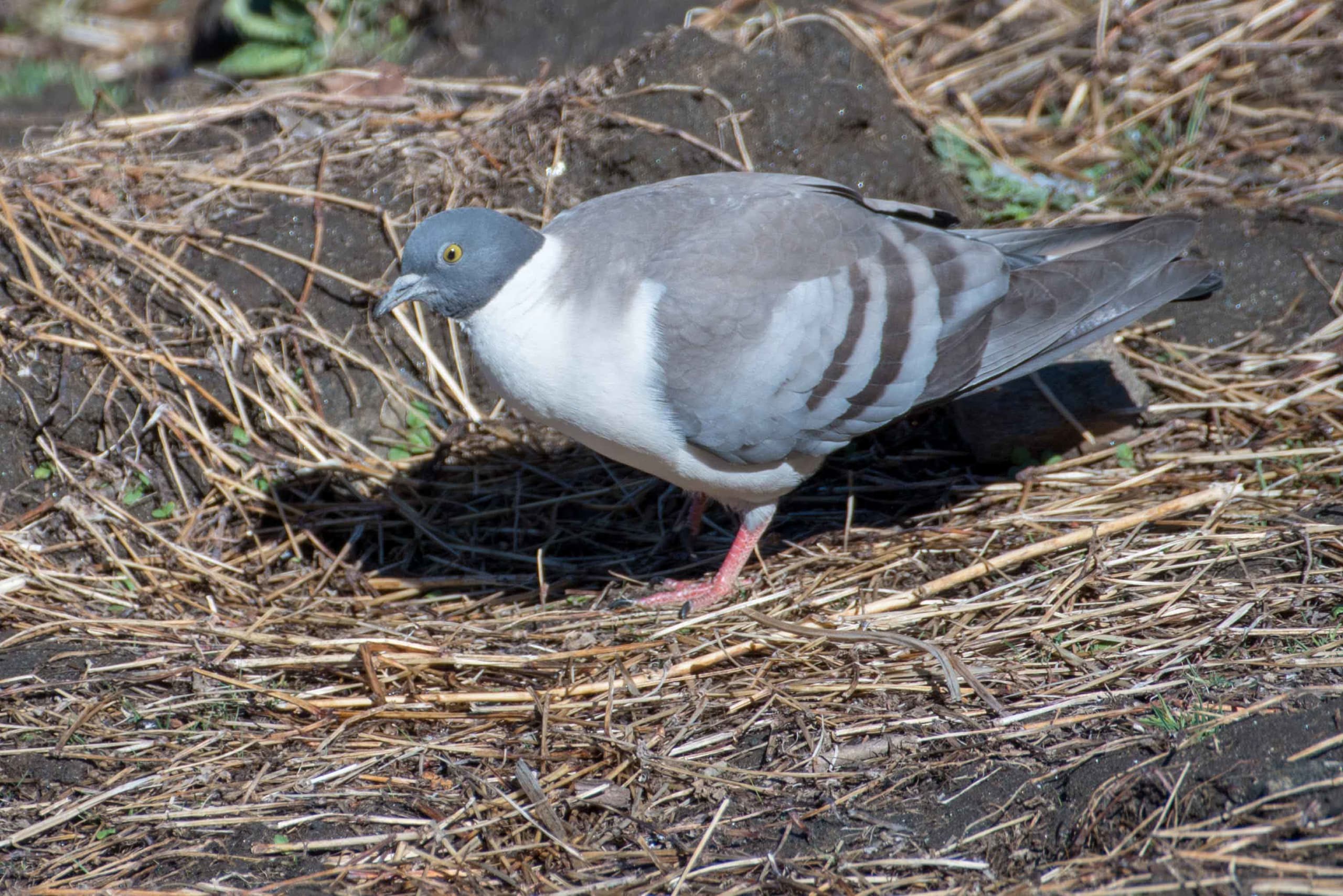 Listen to this article
•
15:34 min
Listen to this article
•
15:34 min
One of the best ways to wrap your head around the marvel of evolution is to see two genetically related species of birds subtly adapted to their environments. It worked wonders for Charles Darwin when he spent time observing finches in the Galapagos. Seeing snow pigeons (Columba leuconata) in Munsyari gave me a new perspective on a bird I see nearly every day in Bangalore City. The snow pigeon resembles the city pigeon (Columba livia domestica) that rove Bangalore and other cities around the world.
City pigeons usually live on and around buildings, descending to the ground to grab a meal. Snow pigeons sit on high-altitude rock faces and feed in fields very close to tracts of snow. To help the snow pigeon camouflage in its snowy habitats, its body and tail are covered generously with white. City pigeons, on the other hand, have a wide variance of unpredictable colours and patterns. However, most pigeons in Bangalore city resemble their genetic ancestor, the rock pigeon — and sport bluish grey with two black stripes (bars) on their wings.

Cover photo: A highland resident, the snow pigeon measures around 31–34 cm in length and weighs around 255–307 gm. Photo: Saurabh Sawant
The rock pigeon (Columba livia) was among the first birds to be domesticated by human beings. Their keen sense of navigation made them excellent messengers. Selective breeding began to produce “breeds” that came in a variety of colours and sizes. Domestication of the rock pigeon for nearly 10,000 years gave rise to the domestic pigeon subspecies Columba livia domestica. Rock pigeons and escaped domestic pigeons that live in the urban wild have been dubbed city or feral pigeons because of their ubiquitous presence in urban spaces.
The city pigeon has adapted to ecosystem changes through thousands of years of proximity to human settlements — it has comfortably taken to roosting and nesting in concrete structures as a replacement for rocky crevices and feeding on tarmac streets instead of open fields.
The snow pigeon, much like the rock pigeon, still roosts and nests on rocky cliffs and ravines. Its native range starts from Kyrgyzstan in the west, stretches across the Himalayas, and extends to China and Myanmar to the east. This high-altitude belt is filled with ravines, alpine valleys, and plenty of choice real estate for the snow pigeon to find a rocky abode. In the warm months, between May and July, they breed in large colonies and build scanty nests made of sticks held together by knotty grasses. The snow pigeon’s nests are set up on cliff faces which make them nearly inaccessible to most predators. The rock acts as a stable base and does not require the snow pigeon to build elaborate nests. Though minimal, they ensure that the eggs will not roll off from the nesting site.
Across their range from Kyrgyzstan to China, snow pigeons typically live in alpine and snowy habitats (climes that are too cold for the survival of trees) at altitudes ranging between 3,000 m and 5,000 m. During the winter, however, they come as low as 750 m in search of food and warmth. In November 2022, thanks to this winter migration to warmer pastures, I met my first pair of snow pigeons in Munsyari on a trail roughly 2,500 m above sea level. As the days progressed, I saw larger groups of 5-7 pigeons; the largest flock numbered at least 25 birds.
In flight, the group was a flutter of grey with shimmering white at some angles. On the ground, they would sit on grassy slopes and feed on grains, seeds, and young roots. Watching them sit and feed led me to study the differences between this bird and the ones I’ve seen all my life in the city.
In terms of size, snow pigeons measure between 31-34 cm in length, very similar to the city pigeons, which measure around 30-36 cm. Snow pigeons are roughly 15 per cent lighter than city pigeons. Despite the similarity in size, snow pigeons look plumper because of the fluffy white feathers that cover their neck, breast, and belly. The fluffed-up feathers trap heat and help the birds stay warm. Their wings look like those of city pigeons in that they are grey in colour with black stripes (bars). However, the snow pigeon has three black bars on its wings, one more than its urban counterpart. The snow pigeon’s tail, however, is entirely black with a single white line across the middle; markedly different from the rock pigeon’s mostly grey tail with a black tip. The snow pigeon’s head is an abrupt dark grey, very different from the rest of the grey body. In the rock pigeon, the head and body are the same concrete-grey; they are, however, separated by a lustrous iridescent neck of purple and green.
Watching snow pigeons around Munsyari made me a little less ignorant of the city pigeon. Their ubiquitous presence around us is thanks to the thousands of years of rock pigeons living around humans. Their ability to thrive in cities comes from us building rocky habitats of concrete where trees and grasslands once stood. Their stingy nests made of a few twigs are enough to keep their eggs from rolling off window ledges and parapet walls. Watching snow pigeons has irreparably made me a fan of pigeons of every kind. Much to the dismay of many friends and a neighbour, this includes the city pigeon/feral pigeon (depending on whom you ask).









